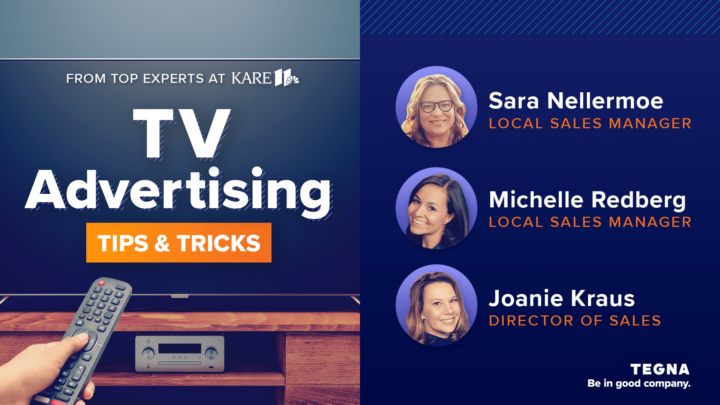Rookie Marketing Move: ‘I Like to Keep TV and Digital Separate.’
Integrating your advertising can improve your overall campaign success and increase marketing ROI significantly.

Because TV and digital ads can be very different in structure, some marketers think they should be kept separate—separate campaigns, separate budgets, and perhaps separate vendors. But many marketing pros prefer to use TV and digital ads together to create a seamless, integrated marketing campaign and make the most of their budget. That’s because they recognize that the benefits build.
3 Benefits of TV and Digital Advertising
Among the most significant benefits of both digital and TV advertising is the power to reach and engage the right audience, drive action and track your success.
1. Reach a Highly Specific Target Audience
Digital ads can be highly targeted, and TV ads can be aired during specific programming and dayparts to reach specific audiences. For TV ads, compare the demographics of your target audience to the station, programming, and schedule, and remember that demographics include more than age and gender. You should also consider the household income, level of education, marital status, and occupation, among others.
Include psychographics that cover why a viewer may buy a certain product. Examples include interest in a healthy lifestyle, favoring quality over economy and spending time with family and friends. Digital ad platforms such as Google and Facebook use information gathered from user settings or activity to collect information that allows for even more precise targeting.
The combination of TV advertising and digital marketing provides the ability to get granular with your target audience. Ensure that your targeting decisions across channels are complimentary. When your target audience tunes in and sees your spot on TV, is your business on the same social platforms consumers are scrolling on their phones simultaneously? Does your social messaging support the creativity in your TV ad?
2. Drive Action
Although the customer experience can be very different between digital and TV, both ad types effectively drive action and prompt a response. For example, TV ads are effective for driving additional research and purchase decisions, particularly for consumers already in the market for your product or service. TV provides an effective path to discovery for particular products or services and is a great way to build brand awareness. With digital ads, you have the ability to capture your audience’s attention in a place where they can make an immediate transaction such as purchasing a product or filling out a form.
By using more than one medium, you have the ability to tell more of your story. For example, you can use a TV ad to get their attention and provide more digital information. A study conducted by Nielsen demonstrated a clear correlation between viewer program engagement and ad memorability. The more engaged viewers are in their programming, the more attention they will pay to the ads aired during them.
3. Measure and Monitor Your Success
In addition, both digital and TV ads provide ways to measure results and track success, enabling advertisers to use precise analytics to understand what’s working and what isn’t.
For TV ads, analytics include program ratings by demographic; gross rating points, which analyze the frequency of exposure; and effective reach, which can help you determine the optimum frequency. There are a number of metrics for digital ads, some of which are specific to the type of ad, but in general, they include reach, number of impressions, click-through rate and engagement.
Drive Marketing ROI
In addition to the core benefits discussed above, using digital and TV together provides the opportunity to strengthen branding by sharing your message in multiple places and providing your audience with a consistent experience across channels.
Significant research has been conducted on the incremental ROI that can be expected when adding platforms—what’s referred to as the “Kicker Effect.” ROI increases with each additional platform up to five, at which point ROI is increased 35% over using just one platform.
The combination of digital and TV has been proven to be the most effective mix of media platforms. Combine digital and TV to grow your marketing mix, and stretch your marketing budget even further by using the same creative concept.
It’s a rookie marketing move to keep TV and digital advertising separate. Each on its own is a powerful marketing tool, but no marketing should exist in a silo. Integrating your advertising can improve your overall campaign success and increase marketing ROI significantly.





















